Share
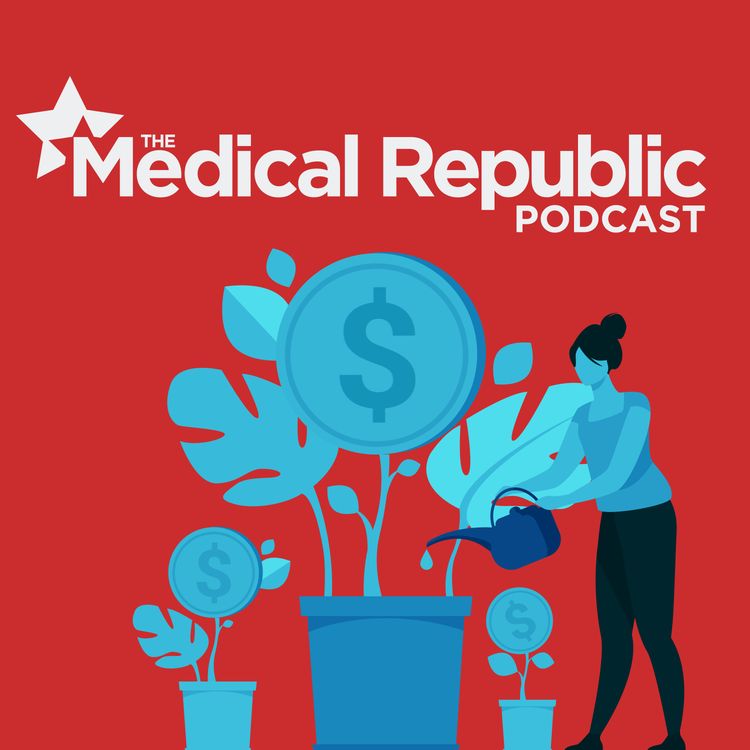
The Medical Republic
Show me the money!
Do you struggle to keep your practice running like a well-oiled machine?
Our line-up of experts today share insights on how to earn more profit, retain staff, cover your risk and level up your practice management.
Guests include an accountant, lawyer and cybersecurity guru. We also hear from a health economist and a GP who has scaled their clinic to good financial and patient reward.
Their advice includes how to optimise billing, hours of operation, and the value of a monthly review meeting with your team.
Our guests also delve into technology solutions to cover your biggest cybersecurity risk and using social media to recruit staff that are a perfect match.
Can a general practice prioritise clinical excellence and still make money? Listen to The Medical Republic podcast and find out what the experts say.
[ACAST EMBED CODE]
Resources:
Guide to health privacy, Office of the Australian Information Commissioner.
You can listen and subscribe to the show by searching for “The Medical Republic” in your favourite podcast player.
More episodes
View all episodes
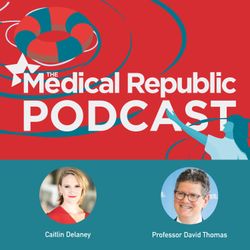
158. Rare cancers get a new, genomic pathway
17:40||Season 5, Ep. 158If Caitlin Delaney hadn’t pushed for genomic testing and off-label therapies, she might not have been around to share her insights on The Medical Podcast this week. As a health professional she also had the benefit of health literacy and a personal assertiveness that may have well also helped her be at her daughter’s 10th birthday. “There were lots of ‘sliding door’ moments. If I hadn't asked a certain question or pushed for a different answer or gotten a second or third opinion, then the outcome would be very different,” she says. The epicentre of Ms Delaney’s survival is genetic testing. She says it’s critical because it opens the doorway to emerging new treatments, personalized medicine and clinical trials. “These are critical for all cancer patients, but especially for rare cancer patients whose treatment options may be limited,” Ms Delaney said Ms Delaney was diagnosed with stage 4 clear cell ovarian cancer nearly seven years ago. She is enthusiastic about PROSPECT a new cancer treatment pathway that provides genomic testing to Australians with rare or incurable cancers, and then provides access to any clinical trials and off-label therapies that might make a difference. PROSPECT cancer screening program is a clever collaboration between University of New South Wales, NSW government and a whole range of players in the Australian medical research sector. [ACAST LINK] Professor David Thomas leads Omico, the not-for-profit which runs PROSPECT’s cancer screening program. He is optimistic about PROSPECT bringing a bit more equity to cancer treatment for those with rare cancers who often miss out on trials or are and also for remote patients. “Regional and rural Australia is very important to us and we're specifically trying to promote the program and work with our clinical colleagues in regional cancer centers. “That specifically applies also to Aboriginal and Torres Strait Islander cancer patients. Rural and regional patients, as well as Indigenous cancer patients, have demonstrably worse outcomes. We don't want them to be left behind,” he says. For the 150 people diagnosed each day with a rare cancer, it’s a new pathway that can make the difference and not just in the future. Professor Thomas says the program is not a philanthropic exercise with no connection with patient interests. “The pace of research progress is so great that it's now creating options for patients in real time rather than for some future benefit. “I would encourage us to think about research as just another part of the way of our armamentarium when we try to treat diseases like cancer,” he says.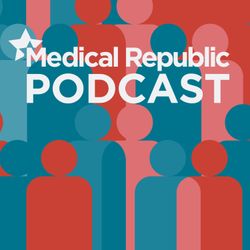
155. Treating LGBTQI+ patients: a mini-masterclass
20:28||Season 5, Ep. 155With so much to learn in so little time, managing LGBTQI+ patients isn’t yet high on the priority list at medical schools. Dr Asiel Adan Sanchez is a GP and clinical tutor at the university of Melbourne. He knows first-hand that clinical environments can be off putting for people who are queer, trans and gender diverse. He’s also created a solution for that called Wavelength: a learning tool that builds clinician skills and makes general practices safer for LGBTQI+ folk. Dr Sanchez gives a quick masterclass on the simple and practical ways to take away the awkward interactions that occur in many medical environments. They say a very common example is when taking a sensitive history and asking about gender affirmation procedures. “A lot of clinicians really struggle with asking those questions and often the language that they use is quite inappropriate. ‘Have you had the operation?’ for example. A patient might get this question all the time outside, in the real world, and if you don't explain to the patient what the rationale behind asking those questions is, it can be really distressing for them,” says Dr Sanchez. Dr Sanchez provides a graduated approach to inquiring about gender affirmation surgery, after building rapport through simple ways such as using correct pronouns. “I often tell medical students to fall back on the skills that they already have around cultural competency to build that rapport with the person. For example, you might be talking about work and family and what the patient does at home. Then you can ask ‘By the way, are there any pronouns that you'd like me to use?’ And that's an organic and simple approach,” they say. Wavelength training module is now managed by the Australian Medical Student Association (AMSA), which is advocating to incorporate the content into Australian medical school curricula. Medical student Sophia Nicolades has researched the LGBTQI+ health curriculum gap. They found that, on average, there were between zero and two hours across the whole medical degree dedicated to LGBTQI+ health. “We also found that the groups with the poorest healthcare outcomes were also the least present in our curricula – those being trans people, intersex people, bisexual people, and those with intersectional experiences such as First Nations people and folks with disability,” Mx Nicolades said. Dineli Kalansuriya, medical student and chair of AMSA Queer, is also working to improve the medical curricula at Australian universities. “We would also love for some practising doctors to take part in the Wavelength module and let us know if they feel that it's relevant, if it's representative of the presentations that they've been seeing as well,” she said.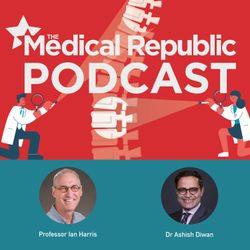
154. Spinal fusions: why, when, how and who pays
18:00||Season 5, Ep. 154The number of spinal fusions performed in Australia has skyrocketed over the past few decades, with the number of privately funded procedures far outstripping those done in the public system. Spinal fusions, which help stabilise the spine by surgically joining two or more vertebrae together, can be used following traumatic injury, or to help correct scoliosis in children. But the most common use for spinal fusions is in degenerative conditions of the spine. This episode of The Medical Republic Podcast explores when this procedure should be considered, and why we are seeing such a large increase in the number of these procedures being performed. Dr Ashish Diwan, director of the Spine Service at St George Hospital in New South Wales, says there are several considerations to be weighed before undertaking a spinal fusion, including the duration, intensity and frequency of back pain; whether other treatment options have been tried; and what the patient wants. Dr Diwan has sympathy for GPs with patients who are considering undergoing a spinal fusion, which is far from a straightforward decision: “It's like trying to get married. If you're in doubt, don't do it.” The decision not to do surgery can be equally challenging, according to Dr Diwan. “There is also an incredible lack of evidence as to what you do for a person who continues to suffer. The alternatives [drugs, spinal cord stimulators or radiofrequency ablations] are not very clear … none of them stack up when you start dealing with people who have pain of a chronic nature.” There are many reasons for the spike in the number of spinal fusions being performed, according to Professor Ian Harris, an orthopaedic surgeon and researcher from the University of NSW. “There is an aging of the population, but [now] there are more so called ‘indications’ for spine surgery,” he tells the podcast. “The techniques of doing them have developed in a way that there's now lots of different ways you can do spine fusions.” Several reasons also exist for why more privately, rather than publicly, funded procedures are being done. But Professor Harris feels the inclusion of MRI scans on the MBS is glaringly obvious one. This presents a fine line to walk between using imaging to rule out potential pathologies and jumping at shadows and operating unnecessarily on age-related changes. This reinforces the need for clear discussions with patients about any imaging findings. “Just having a scan doesn't hurt anyone. It's what you do with the results that can harm people.”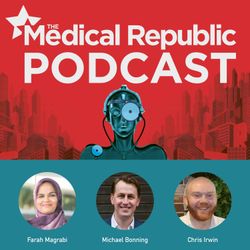
153. The AI will see you now
20:39||Season 5, Ep. 153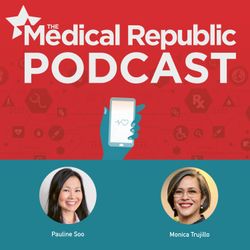
152. The rise and rise of Health Apps
13:26||Season 5, Ep. 152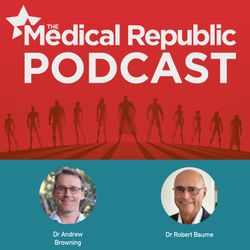
151. Hero doctors
23:22||Season 5, Ep. 151Voluntourism is an enticing form of travel: exotic locales, cultural immersion, serving needy populations with your skills – all wrapped up in your four weeks’ annual leave. Not so fast. Before packing your passport and mosquito net tune in to The Medical Republic podcast to hear from two guests who might make you reconsider. Dr Andrew Browning has been doing fistula surgery in Africa through the Barbara May Foundation for around 25 years. He says its life changing for patients who start to live normal lives again after the deeply distressing injury caused by obstructed labour. However, Dr Browning says a donation that funds local health workers may better support outcomes than a short-term volunteering stint. “When you're there for a short term the people don't know you, you don't know them. You don't know the culture, you don't know the way things work or don't work. “The people there are very polite, very long suffering and will put up with you for the time that you're there. Then as soon as you leave, they just go back to their normal ways,” Dr Browning says. But if you're still keen Dr. Browning said there are some spaces for shorter term volunteers if you have specialised in obstetrics, gynecology or midwifery. “Around 40% of these girls have been suicidal or attempted suicide with this injury, a hundred percent of them are depressed. And when you treat them they just turn back to be normal, happy citizens,” Dr Browning said. It’s the kind of heroic work that many doctors dream of, says rheumatologist Dr Rob Baume. After a bout of professional burn out, Dr Baume considered medical voluntourism but ended up not buying a plane ticket after all. “When I did a bit of more research, I found that unless you have a specific specialties such as anesthetist or an obstetrician, you need to sign up for nine months. The other part of the equation is that I don't speak the language. Then there’s also the cost, the health risks and the risk to your life,” he said. Instead of volunteering himself, Dr. Baume has just raised $1 million for healthcare in developing nations through his charity, Twice the Doctor. Dr Baume said that research by Dr Greg Lewis shows that if a doctor wants to make maximum impact on the world, it doesn't matter which specialisation they do. “What matters is that you give a fair bit of your income to third world causes,” Dr Baume said.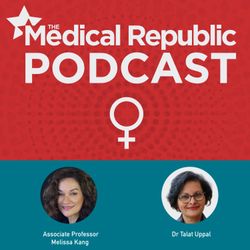
150. What women want
17:12||Season 5, Ep. 150The latest episode of The Medical Republic podcast is a special insight into female parts across the age spectrum.We speak first with Associate Professor Melissa Kang who was, for 23 years, the iconic Dolly Doctor in Dolly magazine – the Australian teen-girl’s bible for many decades.Professor Kang said that teenagers want to know how to navigate the health system and that young women are keen to talk about sexual health but need the GP to raise the topic first.“Research has also told us that young women want GPs to bring up the difficult topics. They want GPs to introduce the topic of sexual health or sex or intimacy,” she said.Professor Kang said that creates a bit of a mismatch because GPs often feel that those topics are too personal and sensitive.“They are waiting for patients to bring it up themselves, whereas young women are saying, “No, we want GPs to do it!”. So, as doctors, we do need to create that space,” Professor Kang said.We also talk about whether young women’s health concerns have changed over the last few decades. Professor Kang said that young women have more health knowledge these days but that some concerns are enduring.“The stigmatization of their bodies and their sexuality. I don't think that has changed an awful lot over the decades that I've been working with young people as a doctor,” she said.Dr Talat Uppal, our second guest, also that even midlife women experience taboo and shame about their bodies and that their health concerns are often minimised. She said that if a woman says she's having pain, even from a point of view of ischemic heart disease, they are more likely to be “fobbed off” by doctors than men.“It never sees this to amaze me how much women put up with prior to seeking care or sometimes they've sought care but they have not been proactively managed as well as we would hope,” Dr Uppal says.As a gynacologist and obstetrician, Dr Uppal opened her a multidisciplinary team based care clinic, in Sydney. The team draws on a range of expertise including a GP, colorectal specialist, nurse practitioners and physiotherapists.Women’s Health Road cares for women health across their lifespan; from teenage girls with menstrual problems right through to older women with prolapse.“It genuinely gives me joy when I see the difference in quality of care that the woman has access to, which has not been from what just I could do personally, rather, it has been the contribution of all the other tenanted clinicians in our team,” she says.
149. Alternatives to the knife for OA
15:30||Season 5, Ep. 149When the choice is between writing a script for pain killers and a 45 consultation about weight management, which one do you choose?According to Associate Professor Kade Paterson, University of Melbourne, scripts for pain killers and referrals to orthopaedic surgeons are unnecessarily common for patients with osteoarthritis (OA).Professor Paterson says everyone who has osteoarthritis should be offered some sort of therapeutic exercise that suits them, and his fitness focus is backed by evidence.“We see very positive outcomes from the three approaches - exercise, weight management and education. All have been shown to be clinically effective at reducing both pain and function,” Professor Paterson says.Professor Kim Bennell is director of the Centre for Health, Exercise and Sports Medicine at University of Melbourne. She says that the kind of language clinicians use with OA patients is important. Focusing on the person, rather than the joint, is shown to be clinically effective in improving a patient’s willingness to take up exercise, she says.Resources: OA treatment resources from the Centre for Health, Exercise and Sports Medicine.“Using language that talks with optimism about the effective, different treatments out there,” is a small change that is relatively easy to make says Professor Bennell.General practitioner Dr David King also advocates for non-drug and non-surgical treatments to be prescribed first. He’s on the RACGP’s project team for the Handbook of Non-Drug Interventions (HANDI).“HANDI is designed to be a similar resource as a pharmacopia for drugs - just like when we look up, say Australian Medicine Handbook, we can get an idea of the indication and the dose of the non-drug intervention and any contraindications and size of benefits,” he said.Guests also discuss when ACL surgery is best, why young girls are at risk and what gets in the way of a doctor trying non-drug treatments first.